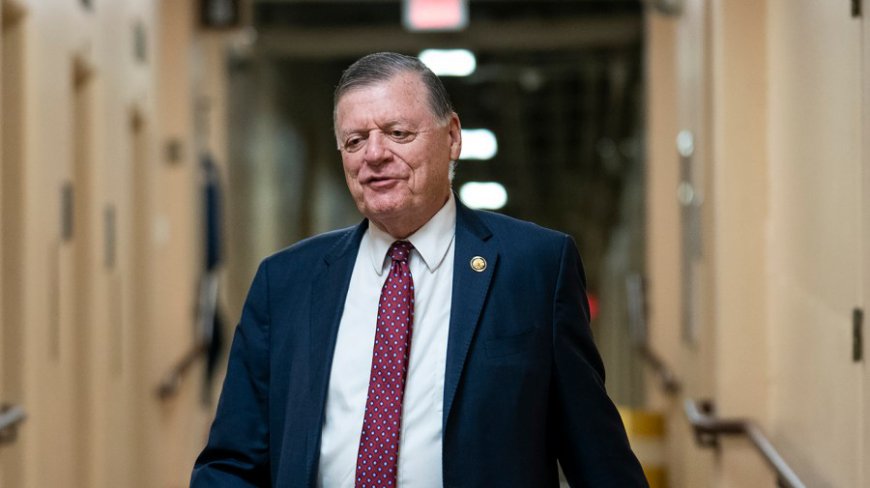GOP struggles to make up time on 2026 government funding work
House Republicans are trying to rev up their government funding work for fiscal year 2026 after devoting weeks of energy to pushing through President Trump’s megabill, but the timeline is slipping ahead of their coming August recess. With about 20 legislative days on the House calendar ahead of a Sept. 30 government shutdown deadline, top...

House Republicans are trying to rev up their government funding work for fiscal year 2026 after devoting weeks of energy to pushing through President Trump’s megabill, but the timeline is slipping ahead of their coming August recess.
With about 20 legislative days on the House calendar ahead of a Sept. 30 government shutdown deadline, top GOP negotiators now expect it will take them beyond August to send all 12 funding bills out of committee.
“Our schedule will take us into early September, which is something we wanted to try and avoid, but I think that’s where we’re at,” House Appropriations Committee Tom Cole (R-Okla.) told reporters on Tuesday.
The hold up comes as both chambers are falling behind in hashing out their full-year government bills, making a stopgap funding bill of some kind practically unavoidable to keep the lights on past September.
House Majority Leader Steve Scalise (R-La.) on Tuesday expressed confidence to reporters that House Republicans would be able to “have well over 60 percent of all government funding” sent to the Senate for consideration before lawmakers “break for August.”
“So no change to the recess schedule right now. We’re holding the calendar,” he said, as the House prepares to take up its annual defense funding bill, which calls for more than $830 billion in discretionary funding for fiscal 2026.
But even if the bill passes, the House is staring down a tall challenge to get its remaining funding bills across the floor before the September shutdown deadline.
So far, House Republicans have advanced five of their annual appropriations bills out of committee, with plans to mark up two more bills funding the departments of Energy, Housing and Urban Development, and Transportation on Thursday.
House GOP appropriators said Tuesday that they’re seeking $45 billion in cuts to federal funding from current levels, with a nearly 6 percent cut for non-defense programs. But they acknowledge their overall proposed funding topline doesn’t go as far as the cuts proposed in President Trump’s fiscal 2026 budget.
“We’re getting pretty much what he wanted on defense, on veterans and on homeland, which are the three areas that he wanted, increase,” Cole told reporters.
“We cut every other bill. Did we cut as much as they wanted at [the Office of Budget and Management]? No, not in every instance, but we certainly looked at what they've given us thus far and tried to make informed decisions,” Cole said.
In its budget request from earlier this year, the Trump administration sought to cut nondefense discretionary spending by $163 billion, or about 23 percent, while boosting dollars for defense programs and immigration enforcement.
However, the budget request factors in the latter increases as part of the funding boosts greenlit in Trump’s “big, beautiful bill” that Republicans recently passed separate from the annual appropriations process.
In total, House GOP negotiators set their proposed funding topline for fiscal 2026 at about $1.598 trillion, calling for about $892.5 billion for defense programs and $705.6 billion for nondefense programs.
Republicans aren’t expecting many, if any, Democratic votes to get the bills across, as their colleagues across the aisle have come out strongly against the funding cuts proposed in the bills and a slew of partisan riders in areas like abortion and diversity efforts seen as “poison pills.”
But despite the level of cuts proposed thus far by the House committee, the bills could still ruffle feathers with some hardline conservatives.
Rep. Andrew Clyde (R-Ga.), a member of the appropriations committee and the House Freedom Caucus, said Tuesday that he “liked the president’s budget” and that he thinks Republicans “should hold to those levels.”
In a letter addressed senior House appropriators earlier this year, members of the hardline conservative caucus pressed for funding negotiators to write bills “consistent” with Trump’s budget request and to “reduce non-defense, non-veterans, discretionary spending to pre-COVID levels.”
In remarks to reporters on Tuesday, Cole defended the committee’s spending bills for cutting spending” and said “there’s no reason why Republicans can't vote for bills that cut spending.”
“Our bills are cutting spending, and these bills, by the way, have to be in a bargaining position where they're gonna have to pass the Senate for Democratic votes,” he said.
“So, this is not reconciliation,” he said, referring to the restrictive process Republicans used this month to pass a major package advancing Trump’s tax priorities without Democratic support in the Senate. “You can’t play the game exactly the same way, but these bills all cuts spending.”
At the same time, the Senate Appropriations Committee is expected to mark its 12 funding bills to an even higher topline, as Republicans have already begun negotiating with Democrats to craft bipartisan bills that can meet the upper chamber’s 60-vote threshold needed to advance most legislation in the Senate.
However, only two bills have been reported out of the Senate committee so far, and zero bills have passed the floor.
Appropriators on both sides are hopeful to push more legislation out of committee in the coming weeks, but Democrats have warned a Republican effort to claw back funding previously approved by Congress for foreign aid and public broadcasting could jeopardize bipartisan spending talks.
Emily Brooks contributed.
What's Your Reaction?
























